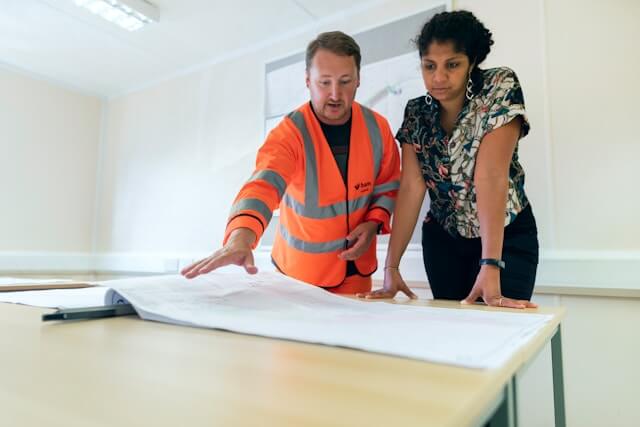
To carry out a working at height risk assessment, a competent person must identify any hazards, assess the risks, identify relevant precautions and produce a method statement. Follow HSE guidance and the below tips to get started.
According to the HSE (Health and Safety Executive), to effectively manage risks while working at height, a competent person must...
- Assess the risks
- Identify relevant precautions
- Produce a method statement
But what is a working at height risk assessment, and where do you start? This blog will explain all!
Working at Height Risk Assessment
When putting together a working at height risk assessment, follow the HSE's (Health and Safety Executive) guidance. To start, you will need to:
- Identify possible hazards
- Weigh up the likelihood of someone getting harmed (rated 1-5 with 1 being highly unlikely and 5 being highly likely)
- Evaluate how serious the damage could be (rated 1-5, with 1 being superficial and 5 being fatal)
The most common risks in a working at height risk assessment are:
- Falling from height
- Dropped equipment
- Fragile surfaces
- Mistakes with ladders
Once you have identified any hazards/risk factors, you must then take the necessary steps to ensure the work is “properly planned, supervised and carried out in a safe manner.”
Identify Relevant Precautions
When approaching work at height, you should follow the HSE’s work at height hierarchy of controls. This list of controls must be followed systematically. This means that you should consider the first option carefully and only if it is not actionable should you move on to the next one.
For example, here are the first two options:
- Avoid working at height unless it is essential e.g. Erect guard rails on steelwork at ground level and then crane the steel and the guard rails into position; provide cast in mesh across riser ducts at the position of services; fix nets using extending poles.
- Prevent falls by using an existing safe place of work that does not require the use or addition of work equipment to prevent a fall e.g. a flat roof with permanent edge protection.
So, the first thing you should always do is consider if working at height can be avoided. If work at height cannot be avoided, then you move on to follow the next option, which involves preventing falls. This is a crucial step of a working at height risk assessment, as in some cases, risks can be avoided entirely.
Produce a Method Statement
It’s important to record the risks and precautions associated with specific work at height jobs and communicate them with everyone involved. This is called a method statement and is the final stage of a working at height risk assessment.
Method statements ensure that all risks have been considered and that there are appropriate measures in place to control them. By providing clear instructions, the method statement reduces the likelihood of misunderstandings and mistakes.
There are no set requirements for an effective method statement. They can vary in length but should always be clear and concise, leaving no room for confusion. Some areas that should be mentioned include:
- Clearly describe the task
- List potential hazards
- Evaluate the risks
- Detail control measures to mitigate these risks
- Provide a detailed, step-by-step guide on how to perform the task safely
- Define who is responsible for each task
- Outline emergency procedures
You can also include a few simple sketches to add further explanation.
Working at Height Safety Equipment
Here at Safety Harness Direct, we specialise in safety gear designed specifically for work at height. We work closely with trusted manufacturers to bring you the best equipment on the market. To browse our safety gear, click the button link below.
Working at Height Safety Gear

